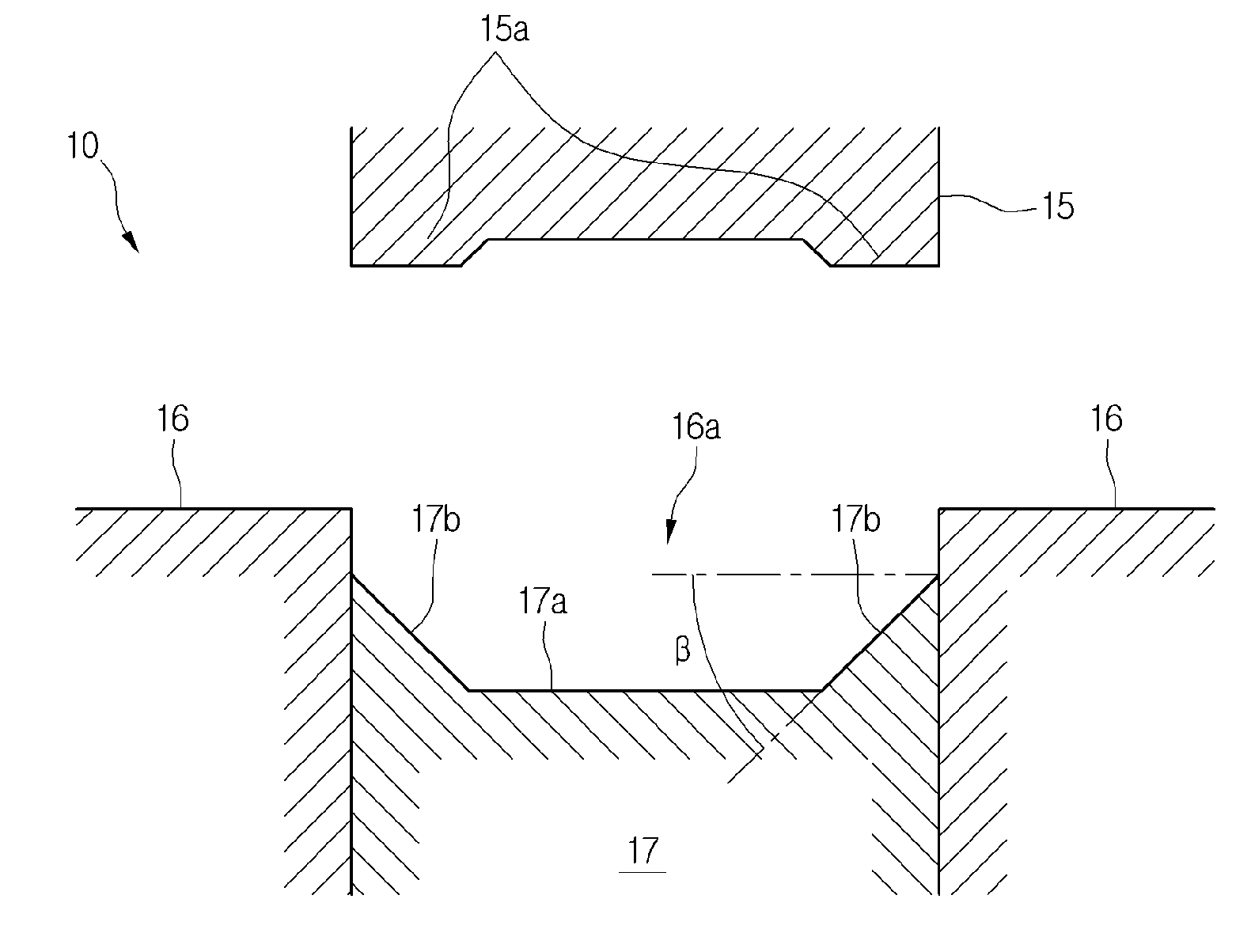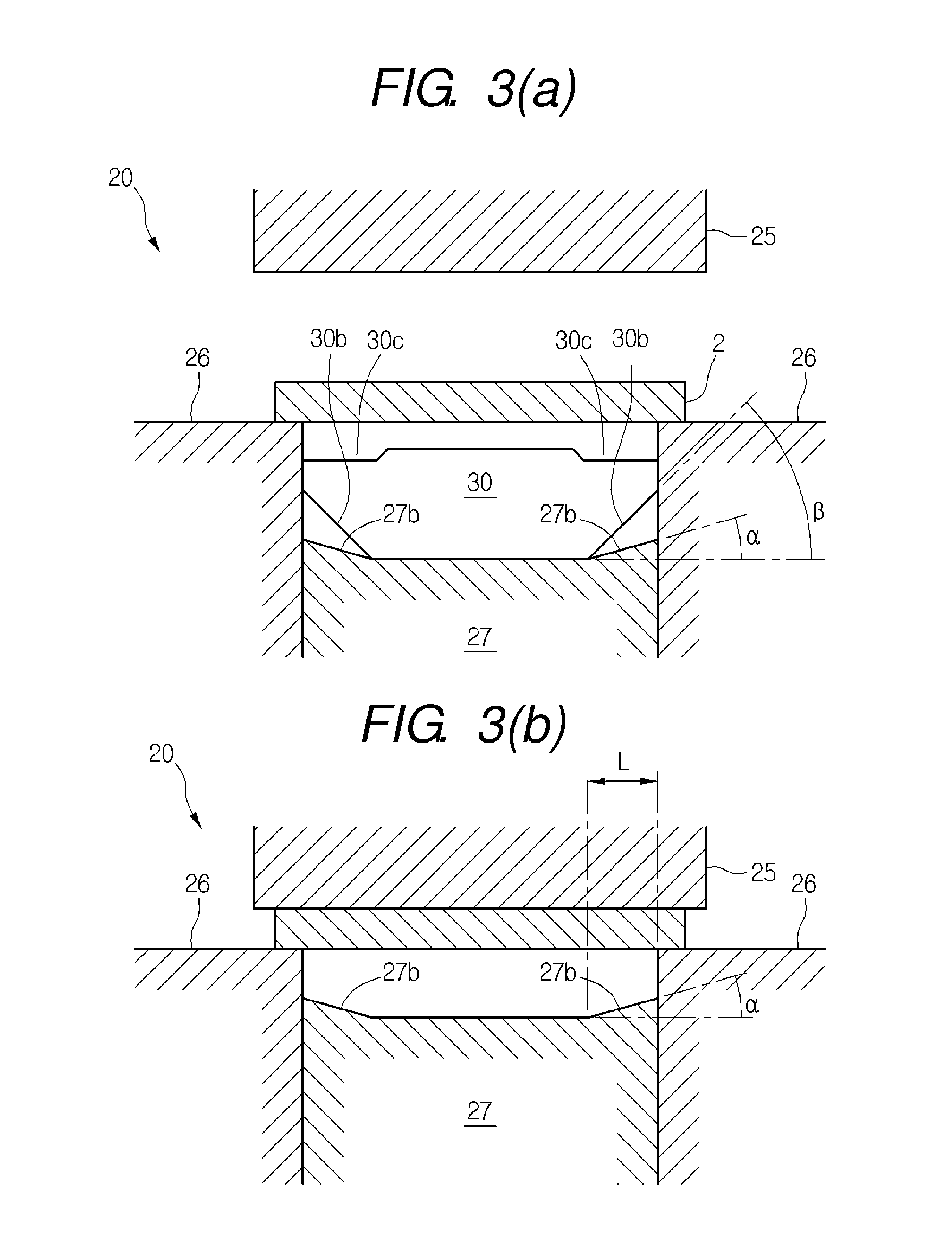Method for manufacturing a disc brake pad
a technology of disc brakes and manufacturing methods, which is applied in the direction of brake types, friction linings, braking elements, etc., can solve the problems of not being able to provide the entire uniformity of friction materials, not being able to provide enough space for powdered raw materials to flow, and making brake noises. the effect of prevention
- Summary
- Abstract
- Description
- Claims
- Application Information
AI Technical Summary
Benefits of technology
Problems solved by technology
Method used
Image
Examples
Embodiment Construction
[0028]Preferred embodiments of this invention will be explained with reference to the drawings. FIG. 1 is a view illustrating the metal preliminarily forming die used in the manufacturing process of this invention. The metal preliminarily forming die 10 is a combination of three metal die parts including an upper die 15, a frame die 16, and a plunger 17. These three parts are set in a press machine while the frame die 16 is fixed but the upper die 15 and the plunger 17 are vertically movable. A cross-section shape of a hollow portion 16a of the frame die 16 has the same shape as a shape of the friction material 3 as appeared in FIG. 5(a) viewing for a plane, and the hollow portion 16a vertically penetrates through the frame die 16. The plunger 17 is vertically movable within the hollow portion 16a. Also, a plan surface 17a is formed at an intermediate portion of an upper surface of the plunger 17, and first inclined surfaces 17b, 17b are formed at both ends thereof. An angle of the ...
PUM
| Property | Measurement | Unit |
|---|---|---|
| pressure | aaaaa | aaaaa |
| angle | aaaaa | aaaaa |
| thickness | aaaaa | aaaaa |
Abstract
Description
Claims
Application Information
 Login to View More
Login to View More - R&D
- Intellectual Property
- Life Sciences
- Materials
- Tech Scout
- Unparalleled Data Quality
- Higher Quality Content
- 60% Fewer Hallucinations
Browse by: Latest US Patents, China's latest patents, Technical Efficacy Thesaurus, Application Domain, Technology Topic, Popular Technical Reports.
© 2025 PatSnap. All rights reserved.Legal|Privacy policy|Modern Slavery Act Transparency Statement|Sitemap|About US| Contact US: help@patsnap.com



